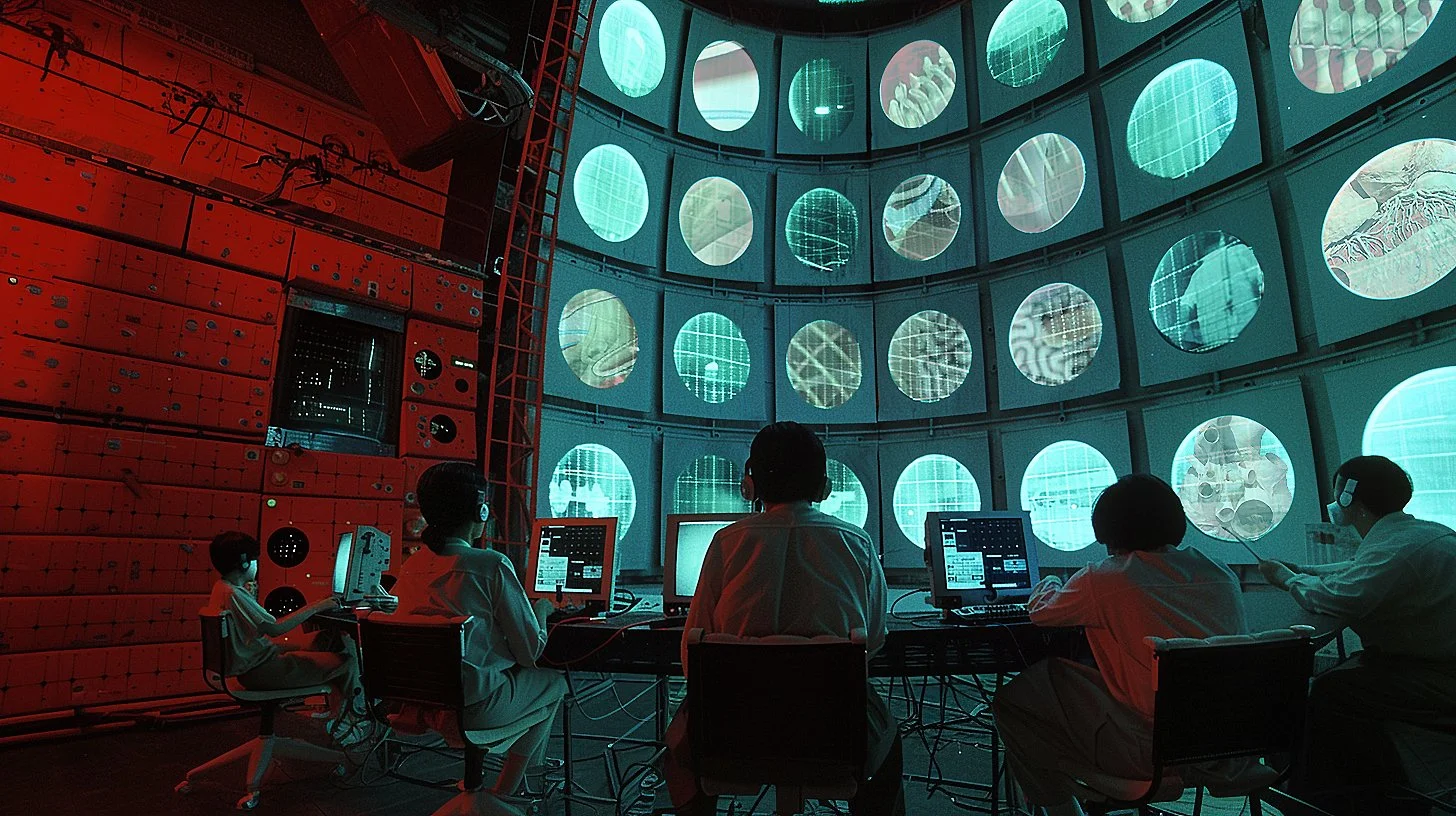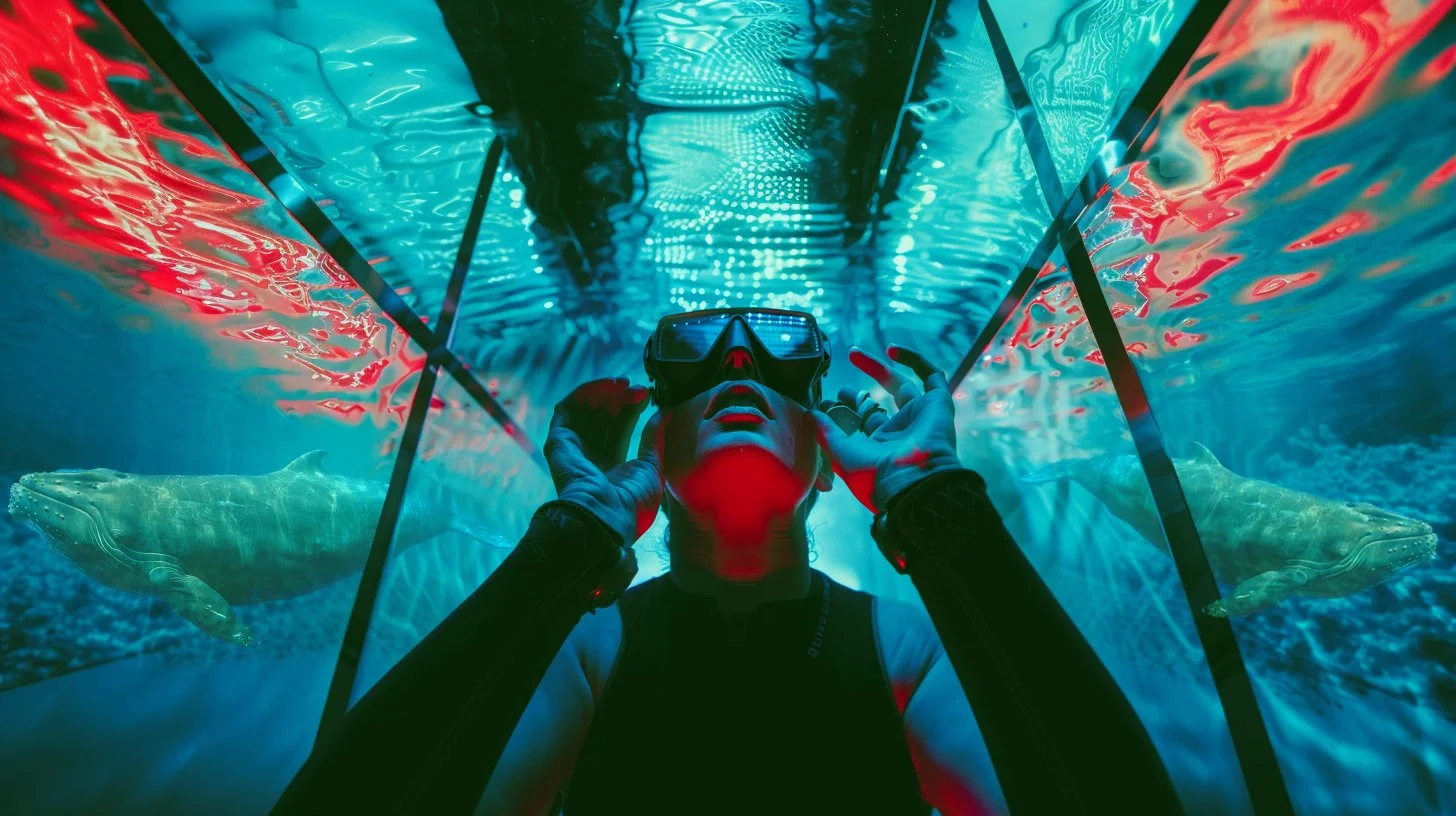
THE ECHO
by Yinglin Chen
The work examines and challenges the fragile (im)balance between ecological exploration and exploitation through the lens of whales, not as subjugated beings, but as equal cohabitants, interrogating the ethics and mitigation of land-sea borders, tourism, and science.
01. Ecological Interventions: investigating the relationship between natural systems and human interventions.
Film Logline: In 2042, the waters of Vava’u, Tonga, host a booming AI-driven deep-sea whale-watching industry, offering tourists a perfectly curated experience. But when an unpredictable humpback whale disrupts the system, marine biologist Lian Carter faces a dilemma. Witnessing the limits of AI and humanity’s control over nature, Lian must decide whether to continue the artificial spectacle or finally listen to the true echo of nature.
Project Description:
This project is not simply about documenting a future scenario of marine technology—it is a critical spatial investigation into how systems of control, observation, and ecological ethics manifest in the design of shared environments between humans and non-human species.
Using the fictional framework of Blue Horizon Base and the real-world crisis in whale-watching industries such as Tonga’s Vava’u, the work interrogates how policy, technology, and architecture collaborate to redraw the boundaries of marine coexistence.
At the center of this inquiry is the eco-wristband—a speculative wearable technology designed to regulate human behavior through real-time feedback loops. While intended to prevent ecological harm, the project critiques how such devices reproduce a one-directional logic of control: sending signals to whales instead of interrogating human proximity, agency, and presence within shared marine space. By visualizing and materializing the spatial tensions between governance and interspecies experience, the project moves from speculative fiction toward architectural critique. It resists the reduction of nature into data and instead proposes a design ethic rooted in humility, uncertainty, and the politics of stepping back.
This is not a proposal for smarter technology. It is a call to reimagine the architectures of restraint, of distance, of listening. A blueprint for cohabitation—not through intervention, but through spatial withdrawal.
SHORT FILM - TouchDesigner, CapCut, Adobe Premiere Pro





